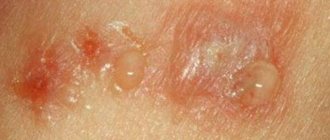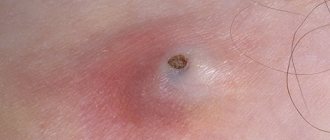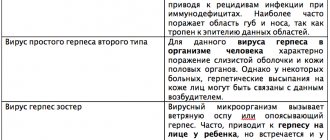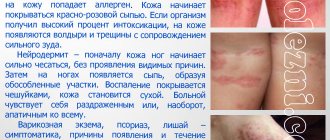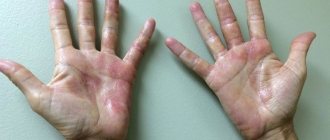A large number of diseases that were previously very rare are now commonplace. The human skin can signal disorders in the body in the form of various rashes. One of these unpleasant phenomena is dermatitis on the face, which often brings discomfort to a person. Half a century ago, this pathology was considered the lot of small children, but today it is also common among the adult population of the planet. Statistics show that twelve out of a hundred people have this disease.
Characteristics and description of the problem
Facial dermatitis, a photo of which will be provided in this article, is an inflammatory disease of the facial skin. The disease appears as a result of exposure of the skin to provoking factors of a physical, biological and chemical nature. Dermatitis manifests itself in the form of a rash and red spots that constantly itch, causing physical and aesthetic discomfort.
There are several types of disease: contact, allergic, atopic, oral, and seborrheic dermatitis.
Reasons for the development of pathology
Facial dermatitis in adults and children can develop for many reasons, both internal and external:
- Disorder of the activity of the exocrine glands.
- Using inappropriate cosmetics.
- Hereditary predisposition.
- Disturbance of the hormonal and digestive system.
- Abuse of bad habits.
- Insufficient oxygen supply.
- Poor nutrition and sedentary lifestyle.
- Prolonged stress and emotional tension, development of neuroses and depression.
- Chronic fatigue, VSD.
With poor diet, lifestyle, exposure to stress and the use of inappropriate cosmetics, dermatitis often appears on the face, the photo of which is presented above. People who have the above phenomena are at risk. To prevent the development of the disease, doctors recommend following preventive measures: promptly treating existing diseases, leading a healthy lifestyle, and engaging in physical activity. This applies to all types of pathology, each of which has its own characteristics.
There are also some irritants that cause simple dermatitis in humans:
- temperature regime;
- friction and pressure;
- ionizing radiation;
- alkalis and acids;
- some types of plants.
Symptoms of the disease
Doctors believe that dermatitis on the face can be a dangerous disease that develops unnoticed. Often the first signs of the disease are similar to minor inflammations or allergic reactions, but in the absence of treatment it can remain in the human body for the rest of his life.
Pathology goes through three stages of development:
- The acute form is characterized by the appearance of red spots and swelling on the face. In some cases, erosions and blisters may occur, containing serous fluid; they constantly itch and eventually begin to peel off. A person experiences pain, fever, and malaise. Peeling areas are usually localized around the mouth, nose and cheeks, and the skin becomes sensitive to any irritants.
- The subacute stage is caused by the appearance of scabs and scales on the skin of the face, which itch and cause discomfort. A person may develop headaches, joint pain, and increased body temperature. Over time, foci of keratinization and rough bluish scars appear on the skin.
- The chronic form of the disease is practically untreatable; it is characterized by alternating periods of remission and relapse. In this case, dermatitis on the face manifests symptoms in the form of skin thickening, infiltration, and lichenification. A person may also experience blue or purple erythema, swelling, atrophy and hyperemia of the skin, hair loss, and telangiectasia.
All of the above symptoms are similar to those of many diseases, such as lupus or psoriasis. Therefore, it is necessary to undergo an examination to make an accurate diagnosis and identify the cause of the development of pathology. Only after this is it possible to prescribe effective treatment.
Folk remedies for dermatitis
Skin disease - dermatitis - can be caused by a variety of reasons. It is important to contact a specialist when symptoms appear in order to make a correct diagnosis and begin treatment. Recipes from traditional healers should become part of a set of measures prescribed by a dermatologist at home. It is unacceptable to self-medicate so as not to worsen the situation.
How to treat dermatitis at home? In the arsenal of traditional healers:
- compresses with tar;
- baths with periwinkle, string;
- applications with aloe juice;
- compresses with propolis oil;
- decoctions from herbal teas;
- vodka infusions;
- lotions with St. John's wort;
- lubricating the skin with essential oils;
- for oral administration – herbal teas;
- applying mash;
- dressings with sea buckthorn oil;
- compresses with onion pulp.
Baths for dermatitis
An excellent healing effect comes from using baths to treat the skin, especially if a significant part of the body is covered with dermatic rashes. It is advisable to carry out the procedure every day for 15 minutes. After using them, itching decreases, peeling and redness disappear, and the skin becomes clean. You need to do at least 10 sessions, changing the composition for the bath. For cooking use at home:
- chamomile decoction;
- succession leaves;
- pine buds;
- oak bark;
- bay leaf decoction;
- Birch buds.
Baths with medicinal herbs effectively reduce the symptoms of dermatitis. You can pour 200 ml boiling water over two tablespoons of calendula, cook for 10 minutes, strain. Pour the composition into the bath. When treating dermatitis at home with folk remedies, the herbal composition perfectly relieves inflammation, itching, and irritation. The dry mixture is poured with a glass of boiling water and left for two hours. According to the recipe it includes in teaspoons:
- nettle – 2;
- valerian – 2;
- cornflower – 3;
- chamomile – 3;
- oregano – 1.
Healing ointments
Ointments that heal wounds, eliminate peeling, relieve itching, and restore the skin help to successfully cope with the manifestations of dermatitis at home. It is recommended to apply them at night and wash off in the morning. It is better to store the finished folk remedy in a dark container on the refrigerator shelf. The natural antibiotic cranberry, mixed with four parts of petroleum jelly, works well. A mixture of equal proportions aged for a week is no less effective:
- honey;
- fresh Kalanchoe juice.
When treating dermatitis at home with folk remedies, a composition consisting of equal parts of powdered zinc, white clay, baby powder with the addition of olive oil to a paste perfectly dries the affected skin. You can make your own ointment, which contains the following ingredients according to the recipe:
- valerian – 5 g;
- golden mustache juice – 20 ml;
- olive oil – 1 spoon;
- baby cream – 20 grams.
Treatment of dermatitis with oil
It is easy to make oil at home to combat skin rashes all over the body. It is required to apply tampons moistened with the composition to the affected areas twice a day for 15 minutes. Here are some of the folk recipes:
- mix part of the butter with four St. John's wort juice;
- put 1 spoon of propolis and four spoons of vegetable oil in the oven until melted.
Treating dermatitis at home with a folk remedy - a homemade composition from geranium - will help get rid of the symptoms of a disease that has been bothering you for a long time. Flowers, leaves - 40 grams - poured with vegetable oil. The preparation process has its own peculiarities - the mixture is kept in the dark for 5 days, then in the light for a month and a half. It is easy to prepare tar oil and then use it for applications, compresses, and baths. On prescription:
- melt 100 g of baby soap;
- add 35 g of vegetable oil;
- put 30 g of birch tar;
- pour in 100 g of water;
- stir.
Herbs
Even experts note the effectiveness of herbs in treating dermatitis at home. Medicinal plants are used externally as lotions, used for baths, and taken orally. According to traditional medicine recipes, remedies are prepared - decoctions, tinctures, infusions. For internal use, to cleanse the body, you can brew tea - pour a spoonful of herbs into a glass of boiling water. For dermatitis, it is recommended to use plants separately and make a mixture:
- cornflower;
- nettle;
- lemon balm;
- currants;
- dandelion;
- birch leaves;
- daisies.
No less effective in treating dermatitis at home are alcohol tinctures, which are used to wash the affected skin. To do this, use a napkin made of several layers of gauze or fabric. To make a folk remedy from celandine you need:
- chop 60 g of fresh plant;
- squeeze out the juice, pour into a bottle;
- leave it for a week without light under the lid - for fermentation;
- open periodically, releasing gases;
- after 7 days add 60 ml of vodka;
- keep in the refrigerator for two days;
- apply twice a day.
Tar soap
The beneficial properties of this product are well known. It improves blood circulation, promoting healing, relieves irritation, and has an anti-inflammatory effect. It is important to make sure that tar soap will not cause allergic reactions. When treating dermatitis at home, a liquid composition is very convenient to use, which additionally includes concentrates of medicinal herbs.
The use of tar soap depends on the type of dermatitis:
- atopic – applied topically only to the affected area;
- allergic version - used for preparing baths, not suitable for use on the skin - deterioration is possible;
- oral – used for washing, twice a day;
- seborrheic - for washing hair only with oily hair, rinsed with herbal decoctions.
Allergic dermatitis
Often, dermatitis on the face of a child or adult occurs as a result of the body’s individual reaction to certain irritants. The allergen in this case can be different things, for example, pollen, food, cosmetics, and so on. The disease manifests itself already on the fifth day after the allergen enters the body. A person may experience areas of skin redness, swelling, and watery eyes. In advanced cases, it is possible to develop headaches, weakness, and the appearance of blisters, in place of which scars and scars subsequently form. In the absence of therapy, the disease becomes atopic.
What causes dermatitis?
The causes of dermatitis on the face are not fully understood, and in official medicine there are still questions about what exactly causes the disease. But it has been established that provoking factors can be:
- chronic stress and fatigue;
- allergic reactions;
- hormonal disorders;
- poor nutrition;
- taking certain medications;
- autoimmune reactions of the body;
- improper skin care, low-quality cosmetics;
- chronic infections;
- physical factors (cold, burns of various etiologies, etc.);
- alcohol abuse, etc.
Heredity also plays an important role in the occurrence of dermatitis. If parents have a history of this disease, there is a high probability that the child will also develop it.
Atopic form of pathology
Atopic dermatitis on the face occurs as a complication of the allergic form of the pathology. The disease manifests itself in the form of bright red spots, which are often covered with crusts. In medicine, such formations are called eczema; the disease is dangerous because it can become chronic in a short period of time.
Heredity often plays a role in the development of the disease. It may not show symptoms for a long time, but when exposed to certain factors, it can begin to develop rapidly, this is especially true during a hormonal surge or severe stress.
A person in the facial area experiences redness of the skin, itching and burning, and peeling. At the same time, the eyebrows become thinner and begin to break, and the folds on the eyelids deepen. When mechanical impact is applied to pathological areas, inflammation begins, as a result of which the skin becomes rough. When scratching itchy areas, a secondary infection may occur.
Treatment
The beginning of treatment for allergic dermatitis is to identify the allergen and completely prevent contact of the patient’s skin with it. In the first stages of the development of the disease, this measure is often enough to cure.
Symptoms of the disease are relieved by local means:
- “Betamethasone”;
- “Eplan”;
- “Exoderil”;
- “Gistan”;
- “Radevit”;
- “Losterine.”
Later stages of the disease require complex treatment , which includes the following measures:
- taking antihistamines;
- removal of toxins;
- removal of external skin manifestations;
- general strengthening of the body and restoration of intestinal microflora.
Drug therapy
Drug therapy is the main stage of treatment of allergic dermatitis on the face. The doctor prescribes several groups of medications for administration and local use:
- Oral antihistamines:
- “Dexamethasone”;
- “Prednisolone”;
- “Tavegil”;
- For severe symptoms, hormonal ointments are prescribed:
- "Akriderm";
- “Flucinar”;
- “Celestoderm”;
- Products for removing toxins and normalizing intestinal microflora:
- “Polysorb”;
- “Enterosgel”;
- “Lactofiltrum”;
- “Acipol”;
- Immunomodulators and vitamins:
- “Groprinosin”;
- "Amizon";
- “Lykopid”;
- “Imudon”;
- vitamins B, C, E;
- Sedatives:
- “Fitosed”;
- “Sedavit”;
- “Persen”;
- “Novopassit”;
- In case of secondary infection, antibiotics and anti-inflammatory ointments are prescribed:
- “Minocycline”;
- “Doxycycline”;
- “Tetracycline”;
- “Solcoseryl”;
- “Actovegin”;
- "Indomethacin".
Physiotherapeutic treatment
Hardware treatment methods help relieve allergy symptoms and inflammatory processes on the skin of the face:
- ultraphonophoresis . The procedure allows you to penetrate into the deep layers of the epidermis and deliver therapeutic drugs to them using ultrasonic waves. The first results are noticeable after 5-6 procedures. The course of treatment for severe inflammation is 15 procedures;
- microcurrent drainage . The procedure relieves swelling, reduces itching, and restores blood circulation in the affected areas.
IMPORTANT! Physiotherapeutic procedures are prescribed during the chronic stage of the disease or for preventive purposes during the remission stage. During an exacerbation, hardware exposure to the skin is contraindicated.
Folk remedies
Medicines prepared according to folk recipes complement drug treatment. In the earliest stages of dermatitis development, they can cope with relieving symptoms on their own.
Folk remedies relieve inflammation, heal pustules and microtraumas:
- Cranberry juice ointment . To make it, take 100 grams of Vaseline and 50 ml of fresh juice. The ingredients are mixed and applied to the skin 2-3 times a day.
- Decoction of birch buds . Half a glass of kidneys is poured with a glass of boiling water and left for 30 minutes. Then the resulting infusion is filtered and wiped on the face several times a day.
- Celandine lotion . The juice is squeezed out of fresh celandine leaves and mixed with hot water 1:2. The resulting lotion is used as a compress. The duration of the procedure is 10-15 minutes.
- Starch mask . A tablespoon of starch is poured into 50 ml. water and apply to the face. After 30 minutes, wash off the mask with cool water. The procedure is carried out once a day during an exacerbation of allergic dermatitis.
- Ointment with honey and aloe . Aloe juice is mixed with honey in equal proportions and left for 7 days. Use as a mask once a day.
- Fresh potato ointment . Grate the potatoes on a fine grater and add honey (for 100 grams of potatoes, a teaspoon of honey). The ointment is applied to the face at night.
- Milk-glycerin ointment . 15 grams of milk are mixed with 15 ml of glycerin, starch is added to thicken. The ointment is applied overnight until redness and inflammation disappear.
- Ointment based on baby cream , cypress and myrrh oils. Add 2 drops of cypress and myrrh ether to 10 grams of hypoallergenic cream. This amount is applied to the face once a day.
Contact dermatitis
Contact dermatitis on the face develops as a result of contact of areas of the skin with an allergen, for example, with a latex pillow, jewelry, cosmetics and medications. This type of dermatitis takes a long time to manifest; the first signs can be noticed only after two weeks from the moment of illness. Usually, treatment of the pathology does not take much time, complications do not develop. But often the blisters can begin to itch and peel.
This type of disease also includes photodermatitis, which results in an allergic reaction to sunlight.
What does contact dermatitis look like?
A characteristic sign of the disease, in addition to external signals, may be a severe headache syndrome, a feverish state against a background of weakness and chills.
What external symptoms indicate contact dermatitis:
- Severe redness of the epidermis due to dilation of blood vessels;
- Foci of skin rashes with pronounced itching;
- The appearance of papular nodules filled with serous secretion;
- Increased dryness of the skin, which is accompanied by peeling.
It is important to note that contact dermatitis affecting the face is not a contagious disease; after the correct response, the symptoms disappear without a trace.
Adults should be wary of relapse if a person suffered from an illness in childhood.
The principles of treatment of a dermatological problem depend on the stage of inflammation affecting the skin:
- At the acute stage, there is a strong reaction of the dermis to external stimuli, its increased sensitivity. Irritated skin swells and becomes covered with red spots. Locations: nasolabial triangle, forehead and cheeks;
Related article:
Advantan in the treatment of psoriasis and dermatitis
- Dermatitis on the face in the subacute stage is manifested by islands of itchy peeling with the formation of scales. The disease may be accompanied by pain (headaches or joint pain), the skin becomes covered with rough scars, sometimes bluish;
- The entry of the disease into the chronic stage is characterized by a gradual subsidence of severe symptoms, but with a seasonal exacerbation of symptoms. Treatment of chronic dermatitis is complicated by increased symptoms with each exacerbation.
The chronic form of contact pathology that affects the face can also be identified by the purple color of the dermis in places of constant contact with the irritant.
At the first manifestations of contact dermatitis, it is necessary to begin treatment as early as possible in order to exclude the possibility of a concomitant infection (fungal or bacterial).
Oral or rosacea-like dermatitis
Oral dermatitis on the face, photo, symptoms are described below, usually develops in people between the ages of twenty and thirty. It appears as pink or red spots on the mouth, eyelids and bridge of the nose. As weather conditions change, the spots also change color. Typically, the disease develops as a result of metabolic disorders, disorders of the nervous and digestive systems, and long-term use of hormonal drugs. Without treatment, the spots thicken over time and acquire a bumpy surface. They begin to itch and peel, causing discomfort to the person.
Seborrheic dermatitis
This dermatitis on the face, a photo in adults is posted in this article, is caused by a disorder in the functionality of the sebaceous glands. The pathology is expressed in severe redness of the facial skin, the appearance of pimples on the forehead, around the nose, above the lip and in the eyebrow area.
In medicine, the following types of seborrheic dermatitis are distinguished:
- Oily, which is characterized by the formation of pustules and acne on the skin of the face, and the skin acquires a gray tint.
- Dry, in which the skin peels and becomes covered with white scales.
The reasons for the development of such dermatitis are disorders of the immune, hormonal and endocrine systems, lack of vitamins, diabetes mellitus, prolonged stress and lack of sleep.
Diagnostic measures
Before starting treatment for facial dermatitis in adults or children, it is necessary to identify its type and causes of development. During the initial examination and study of the medical history, the dermatologist pays attention to the nature of the rash, the time of onset of the first symptoms, and the presence of concomitant diseases. The diagnosis is made on the basis of an external examination and a study of the pathological history. When studying a disease, it is important to identify the causes of its development in order to be able to eliminate them.
As additional diagnostic measures, the doctor prescribes laboratory blood tests, hormone tests, and serological research methods in the presence of concomitant infections. In addition, you may need to consult other specialists.
Therapy of allergic and atopic dermatitis
To get rid of this pathology, it is necessary to first eliminate exposure to the allergen. To do this, you can undergo allergy tests. If the irritant cannot be eliminated, the doctor prescribes various creams that have antihistamine components, as well as ointments to eliminate the symptoms of the disease. Disensitizing drugs are often used, for example, calcium gluconate, which are used in the form of injections, as well as special solutions for washing.
Atopic dermatitis on the face is treated in the form of antihistamine creams and ointments, for example, Elokom, Trixera or Solcoseryl. They help relieve swelling and inflammation, eliminate itching and flaking. A dermatologist can prescribe sedatives “Persen” or “Tofisopam” to eliminate emotional stress, as well as medications to normalize the functioning of the gastrointestinal tract. Also in this case, it is important to eliminate the cause of allergic reactions.
Types of dermatitis
Dermatosis is a lesion of the skin without inflammation . The concept of dermatitis is narrower and covers only inflammatory problems. Skin problems are the body’s reaction to cell destruction.
What does dermatitis look like and how to treat it? Depending on the irritant, there are several types of inflammation on the face. Each of them has features in symptoms and treatment.
Allergic dermatitis
This type of disease develops due to the body’s increased sensitivity to certain irritants.
Skin inflammation is an allergic reaction . Chemical compounds, drugs, cosmetics, and plants act as irritants.
Related article:
What does diaper dermatitis look like and how to treat? Treatment in children
Symptoms characteristic of allergic dermatitis:
- swelling of the face;
- red spots;
- rash with blisters;
- muscle weakness;
- headache;
- itching, burning of the affected areas;
- tearfulness.
In severe form, the blisters are replaced by scars. The inflammatory process on the skin of the face starts 1-2 weeks after the reaction with the allergen. Usually, rashes appear when the irritant repeatedly affects the body.
Defeating allergic dermatitis is not an easy task, but you can do everything possible to make life easier. How? Read here
To prescribe treatment, skin tests are performed. This measure allows you to identify the irritant that causes the allergy. The first step in therapy is to eliminate the cause of the impact. The patient is prescribed antihistamine creams and ointments.
The goal of therapy is to eliminate signs of the disease, strengthen local immunity and get rid of cosmetic defects. Relieves inflammation with a 10% solution of calcium gluconate. The drug is used in the form of injections - intravenously. The patient is recommended to wash his face with special solutions.
Contact dermatitis
Pathology develops due to contact with the skin of an irritating substance:
- household chemicals;
- medicines;
- latex;
- products containing nickel.
This type of facial dermatitis develops after contact with hazardous substances. The skin reacts to them with inflammation. Signs of contact damage are similar to those of allergic dermatitis.
The difference is that in the allergic type there is no interaction of the irritant with the skin.
There are 3 types of contact dermatitis:
- irritable contact;
- allergic contact;
- photocontact - the allergen is activated due to exposure to sunlight.
Skin damage occurs immediately or after a short period of time. Simple contact dermatitis is a direct lesion of facial tissue. For example, burns, frostbite, exposure to nettles.
Healing depends on the extent of the damage to the area. Treatment is prescribed depending on the type of irritant. the affected area with external agents.
Atopic dermatitis
Skin lesions often develop into chronic types of disease. This is atopic dermatitis - eczema. The exact causes of the pathology have not been studied. Scientists lean towards a genetic predisposition.
Signs of eczema:
- itching;
- burning;
- bubbles;
- redness;
- peeling;
- thinning and brittle eyebrows;
- deep folds on the eyelids.
The skin on the affected areas becomes rough and crusty. An intolerable tooth leads to constant scratching of problem areas. At the same time, they become easily infected. This makes the situation worse.
Since atopic dermatitis is a chronic disease , it is completely impossible to cure it. Therapy is aimed at remission of the disease - temporary weakening or disappearance of symptoms.
The patient is prescribed creams and ointments for dermatitis with an antihistamine effect.
- Elokom . The ointment reduces swelling and has an antipruritic effect. For the inflammatory process, Elokom is used in the form of a cream. To eliminate peeling, the drug is prescribed in the form of an ointment.
- Afloderm . The ointment relieves itching and inflammation, constricts blood vessels. Suitable for relieving swelling.
- Trickzera . The cream reduces the sensitivity of problem areas. The product is used to moisturize and restore the skin after spots have healed.
- Solcoseryl . Available in the form of ointment and cream. Solcoseryl heals affected areas and helps restore facial skin. The product is also used against itching.
Related article:
How to treat bullous dermatitis?
In some cases, sedatives are used: Persen, Novo-Passit, etc.
To normalize intestinal function, it is necessary to maintain healthy microflora. Experts prescribe Smectin, Hilak-Horte, Linex, Lactofiltrum. These medications help remove toxins and allergens from the body.
Seborrheic dermatitis
There are opportunistic microorganisms on human skin. They do not manifest themselves in any way, but under unfavorable factors they actively reproduce. As a result, the fungus of the saprophytic flora is activated.
This leads to an inflammatory process - seborrheic dermatitis.
Factors influencing fungal activation:
- oily skin;
- decreased immunity;
- hormonal disbalance;
- bad habits;
- stress;
- diseases of the endocrine system;
- reduction of the protective barrier of the dermis.
A sign of seborrheic dermatitis is white or yellow scales. They appear in the nasolabial area, on the cheekbones, and in the eyebrows.
You can read more about seborrheic dermatitis in an article from an expert.
How to treat seborrheic dermatitis? To get rid of itching and burning, the patient is prescribed hormonal drugs in the form of tablets and ointments. They are taken in a small course. The therapy helps prevent the appearance of rosacea and thinning of the skin in problem areas.
With uncontrolled intake of hormones, spider veins appear on the face. Seborrheic dermatitis is treated externally with salicylic acid, ketoconazole, and antifungal drugs are taken orally.
Oral dermatitis
Women are susceptible to the disease.
The affected area is the areas of the face near the mouth. Causes of oral dermatitis :
- incorrect combination of products during pregnancy;
- gastrointestinal diseases;
- toothpaste containing fluoride;
- cosmetics with fragrances;
- hormonal drugs.
The affected areas are red spots of varying intensity. They change color depending on the weather, food, and medications.
Treatment begins with the abolition of all cosmetics and fluoride-containing pastes . Doctors do not recommend being in the sun during therapy. The patient is prescribed antibiotics. In severe cases, they are treated with hormonal ointments. One of the best remedies is retinoic ointment. It reduces the inflammatory reaction and enhances skin regeneration processes.
Do you know how to quickly cure oral dermatitis? We'll tell you here!
Therapy of contact and oral dermatitis
When contact dermatitis develops, it is necessary to exclude exposure to the irritant on the skin of the face. The doctor prescribes antihistamines, and if there are ulcers and blisters with fluid, corticosteroids are prescribed. An effective remedy is Lokoid ointment, which needs to be lubricated on the affected areas for about five days.
Oral dermatitis on the face is treated with antibacterial and anti-infective drugs, which include penicillin or erythromycin, as well as probiotics and vitamin complexes. In severe cases, hormonal ointment is prescribed. During the treatment period, it is recommended to avoid the use of cosmetics and exposure to sunlight. The doctor also recommends taking a course of physical therapy.
Treatment of seborrheic dermatitis
To treat seborrheic dermatitis on the face, you need to take corticosteroids in short courses. The doctor also prescribes salicylic acid, antifungal and sedative drugs, as well as vitamins. Ointments for the treatment of pathology should contain zinc, which helps dry the skin and relieve inflammation.
Physiotherapy is often used as therapy. This includes exposure to ultraviolet, cold or infrared radiation. Sometimes cryotherapy is prescribed, in which a cotton swab with liquid nitrogen is applied to problem areas. This helps cool the skin and eliminate inflammation. In severe cases, the doctor prescribes hormonal drugs, which are used only under his supervision.
It is also important to follow a diet. Doctors recommend excluding fast food products, smoked and pickled foods, alcohol and fatty foods from the diet. It is necessary to eat more vegetables and fruits, dairy products.
Treatment of dermatitis on the face
For treatment of facial dermatitis to be successful, it is necessary to eliminate the causes of pathological changes using complex drug therapy, including:
- antihistamines – relieve itching and other manifestations of allergies;
- anti-inflammatory drugs;
- hormonal drugs;
- antibiotics – destroy pathogenic bacteria;
- antidepressants;
- immunomodulators – strengthen the immune system, increase the body’s defenses;
- sedatives;
- vitamin complexes.
Additionally, the doctor may recommend physiotherapeutic procedures: cryomassage - exposure to cold on the skin and laser therapy.
A prerequisite for recovery is a change in lifestyle. It is necessary to exercise, walk in the fresh air more often, sleep at least 8 hours, avoid stress, and adhere to a hypoallergenic diet.
The basis of the diet should be vegetables and fruits, cereals, fish, and boiled meat. It is recommended to avoid canned food, spicy and spicy foods, pickles, smoked meats, sweets, fast foods, chips, and alcoholic beverages.
Proper skin care is important. To select suitable cleansers, it is recommended to consult a cosmetologist-dermatologist.
Sports activities and walks in the fresh air will have a beneficial effect. They activate blood circulation and oxygen supply to facial cells, which will speed up recovery and also improve the condition of the skin and hair.
In severely advanced cases, you will have to change jobs or move to live in a different climate zone.
Prognosis and prevention
Typically, facial dermatitis, the photo, the treatment of which is discussed in detail in the article, has a favorable prognosis. With timely access to a medical facility, a complete recovery can be achieved. But it is necessary to remember that, having once suffered from dermatitis, it is necessary to constantly exclude contact with the irritant that caused the development of the pathology. Without treatment, the disease becomes chronic and therefore difficult to treat. In this case, the pathology will appear regularly. Often a person in this case develops eczema, wet ulcers, peeling skin and other negative phenomena. Today, medicine has developed many methods of treating this disease.
In order to prevent the disease, it is necessary to adhere to the rules of hygiene, monitor the condition of the facial skin, and use hypoallergenic cosmetics and creams. It is also recommended to exclude from your diet foods that contribute to the production of subcutaneous fat. Strengthening the immune system, normalizing digestion, and timely treatment of various diseases, including chronic ones, will help to avoid the development of pathology.
If all recommendations are followed, it is possible to avoid the development of this disease. It is important not to self-medicate, since dermatitis is a serious pathology that requires a special approach to treatment. Timely contact with a dermatologist reduces the risk of complications and negative consequences.
Treatment of children with folk remedies
Treatment of atopic dermatitis in children with folk remedies requires special care. The use of potent drugs, as well as multicomponent formulations, should be avoided. To prevent complications or side effects, it is better to consult a doctor before starting the course. The following remedies can save your baby from the disease.
Baths and rubbing
The most preferred method of caring for your baby's skin. Water treatments have a beneficial effect on the condition of the skin. Depending on the degree of damage, the following means are used.
Decoction of string
A healing decoction is added to the bath, it can be used from the first days of the baby’s life, it is prepared as follows:
- Pour boiling water over the dry product.
- Bring to a boil in a steam bath, cook for 20 minutes.
- Infuse, cool, strain.
We wipe the baby’s skin with this folk remedy for dermatitis or add it to the bath when bathing.
Decoction of bay leaves
Heals small wounds, dries wet areas of the skin. It is very easy to prepare:
- Bring a liter of water to a boil.
- Add 20 grams of raw materials and boil.
- Remove from heat, cover with a lid, wait until the mixture cools down.
We use the product alternately with the previous one until complete recovery, but preferably no more than two weeks.
Oat decoction
It is taken orally, including for children. Removes toxins from the body, soothes, relieves inflammation. The recipe uses oats collected in an environmentally friendly area, far from roads and hazardous industries.
Recipe:
- Mix 100 g of product with half a liter of cold water.
- Place the container on the fire. Once it starts boiling, reduce the heat and turn it off after ten minutes.
- Remove from the stove, cover with a lid, leave for 4 hours.
- We strain the healing agent.
- Give the child 50 ml before meals. The course of treatment is 2 weeks.
Oatmeal baths also have a beneficial effect on the skin. One mug of product is enough for one session.
